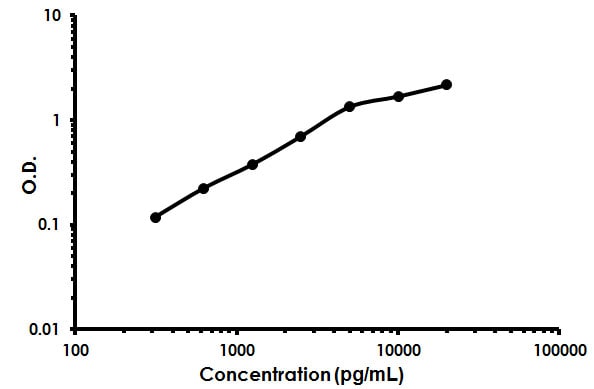Rat CD44 ELISA Kit (ab213928)
Key features and details
- Sensitivity: 10 pg/ml
- Range: 312 pg/ml - 20000 pg/ml
- Sample type: Cell culture supernatant, Cell Lysate, EDTA Plasma, Hep Plasma, Serum
- Detection method: Colorimetric
- Assay type: Sandwich (quantitative)
- Reacts with: Rat
Properties
-
Storage instructions
Store at -20°C. Please refer to protocols. -
Components Identifier 1 x 96 tests ABC Diluent Buffer Blue Cap 1 x 12ml Adhesive Plate Seal 4 units Antibody Diluent Buffer Green Cap 1 x 12ml Anti-rat CD44 coated Microplate (12 x 8 wells) 1 unit Avidin-Biotin-Peroxidase Complex (ABC) 1 x 100µl Biotinylated anti- rat CD44 antibody 1 x 130µl Lyophilized recombinant rat CD44 standard 2 vials Sample Diluent Buffer Green Cap 1 x 30ml TMB Color Developing Agent Black Cap 1 x 10ml TMB Stop Solution Yellow Cap 1 x 10ml -
Research areas
-
Function
Receptor for hyaluronic acid (HA). Mediates cell-cell and cell-matrix interactions through its affinity for HA, and possibly also through its affinity for other ligands such as osteopontin, collagens, and matrix metalloproteinases (MMPs). Adhesion with HA plays an important role in cell migration, tumor growth and progression. Also involved in lymphocyte activation, recirculation and homing, and in hematopoiesis. Altered expression or dysfunction causes numerous pathogenic phenotypes. Great protein heterogeneity due to numerous alternative splicing and post-translational modification events. -
Tissue specificity
Isoform 10 (epithelial isoform) is expressed by cells of epithelium and highly expressed by carcinomas. Expression is repressed in neuroblastoma cells. -
Sequence similarities
Contains 1 Link domain. -
Domain
The lectin-like LINK domain is responsible for hyaluronan binding. -
Post-translational
modificationsProteolytically cleaved in the extracellular matrix by specific proteinases (possibly MMPs) in several cell lines and tumors.
N-glycosylated.
O-glycosylated; contains more-or-less-sulfated chondroitin sulfate glycans, whose number may affect the accessibility of specific proteinases to their cleavage site(s).
Phosphorylated; activation of PKC results in the dephosphorylation of Ser-706 (constitutive phosphorylation site), and the phosphorylation of Ser-672. -
Cellular localization
Membrane. - Information by UniProt
-
Alternative names
- LHR
- BA-1
- CD 44
see all -
Database links
- Entrez Gene: 25406 Rat
- SwissProt: P26051 Rat
- Unigene: 1120 Rat







